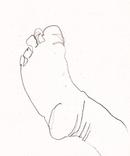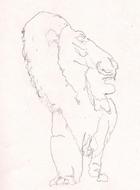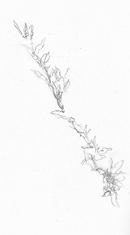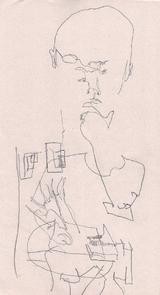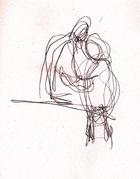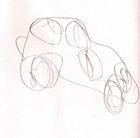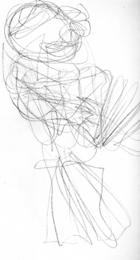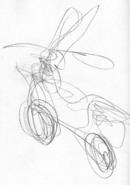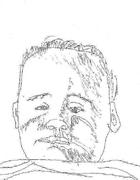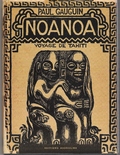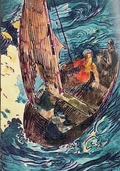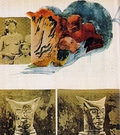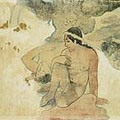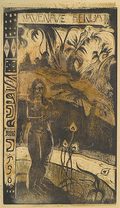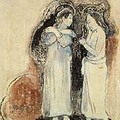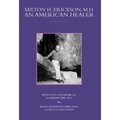It's been a year since I decided to write a short story every day. I’ve succeeded in doing so—including days in which I was traveling from Paris to New York and vice-versa, sick days, busy teaching days, all sorts of days. My wife, a screenwriter, recently asked me how I motivated myself to do it. I thought about it, and here are a few of the reasons I keep doing it every day without exception.
- I’m very competitive, in two different ways. A side of me is disciplined, structured, ambitious, dedicated, even rigid about following a schedule and delivering a commitment. Another side of me is the slacker ready to go take long naps in the afternoon, the reader of comic books slouching in the sofa, the brainless guy who does nothing all day and calls his inactivity “life.” (You guessed it: I'm a Gemini.) These two sides of me are in permanent competition, but in recent years I’ve tended to side with the disciplined me. And once I take sides, I’m brutal. I want my side to win and the opposition to lose, and I’ll do anything to ensure the right outcome.
- But I’m also competitive with others, not just within myself. This will sound ugly to you, dear reader, but writing every day allows me to feel superior to other people. I like to wear my discipline as a badge: I’m a pro. I know how to do it, and I can do it. I’m such a pro, I’d write the daily short story sitting on the back pew of a church during a memorial service. Even if I'm the one who's dead!
- Out of the year’s 365 stories, some were astoundingly bad, so much so I’ll never show them to anyone, not even my adoring wife. (Hey, I have a lot invested in that adoration of hers. Why spoil a good thing?) But some of them were touching, funny, surprising—just plain good. Every day I don’t know if I’m going to write a stinker or a gem, and the possibility of a gem coming out justifies the daily effort.
- Ritual is a necessary part of everyone’s life. The morning coffee, for instance, is a ritual that gets you out of bed and into the swing of things. It’s not just caffeine; there’s the anticipation, the preparation, the appeal to all the senses, your whole relationship to coffee, your memories of having drunk a particularly satisfying cup at Caribou Coffee on a visit to Minneapolis. For me the daily short story adds another ritual, makes the daily life a little more “sacred.” It requires me to stop everything else, clear my mind, and look for the portal to creativity and insight.
- The skill I developed in writing daily stories has permeated into my other writing activities. I can write first drafts of scenes and chapters quickly and easily; the mind opens up willingly because it does so regularly. And the storyteller’s voice seems to be always ready to speak and sing. I “improvise” without censure or shame, and often enough the first draft comes out relatively good already. The daily short story, then, pays enormous dividents for a working writer.
- I’ve found ways of speeding up the process for those days when I really don’t feel like doing it. I write rants, a page of nonsense, a page about my own handwriting… Anything goes! You’re the boss! It takes three minutes, literally, to fill up a page with words and call it a “short story.”
- I’ve used the short story to work through personal issues. To give a banal example, my older brother’s birthday is June 1st, mine is May 31st (that means we were born almost exactly a year apart). Every year we speak on the phone for our birthdays, briefly and awkwardly as befits the state of our relationship. On June 1st I wrote a story about a man who dreads the yearly phone call from his younger brother. The story wasn’t exactly about my brother and me; it was inspired by us but not “written” by us. In an indirect, minor way the story became an expression of my love for my brother, a mini-love letter he’ll never get. I was sad-happy writing it, and the psychological benefits of writing the story added justification to the daily effort.
- I use short stories to test ideas for novels. For instance, I wrote 30 self-contained scenes of a ghost story over 30 consecutive days. Will I write a novel about this ghost? Do I want to? Is it worth my professional attention? Writing the stories is a good way of finding out.
- Some short stories of mine appeal to that lazy slacker who slouches all day reading comic books. It’s a win-win situation: I enjoy writing an absolutely stupid story, I can say I fulfilled my contract and proved myself to be a disciplined professional, and the slacker gets his drug and claims the day.
- Believe it or not, I really, really, really love doing it.
